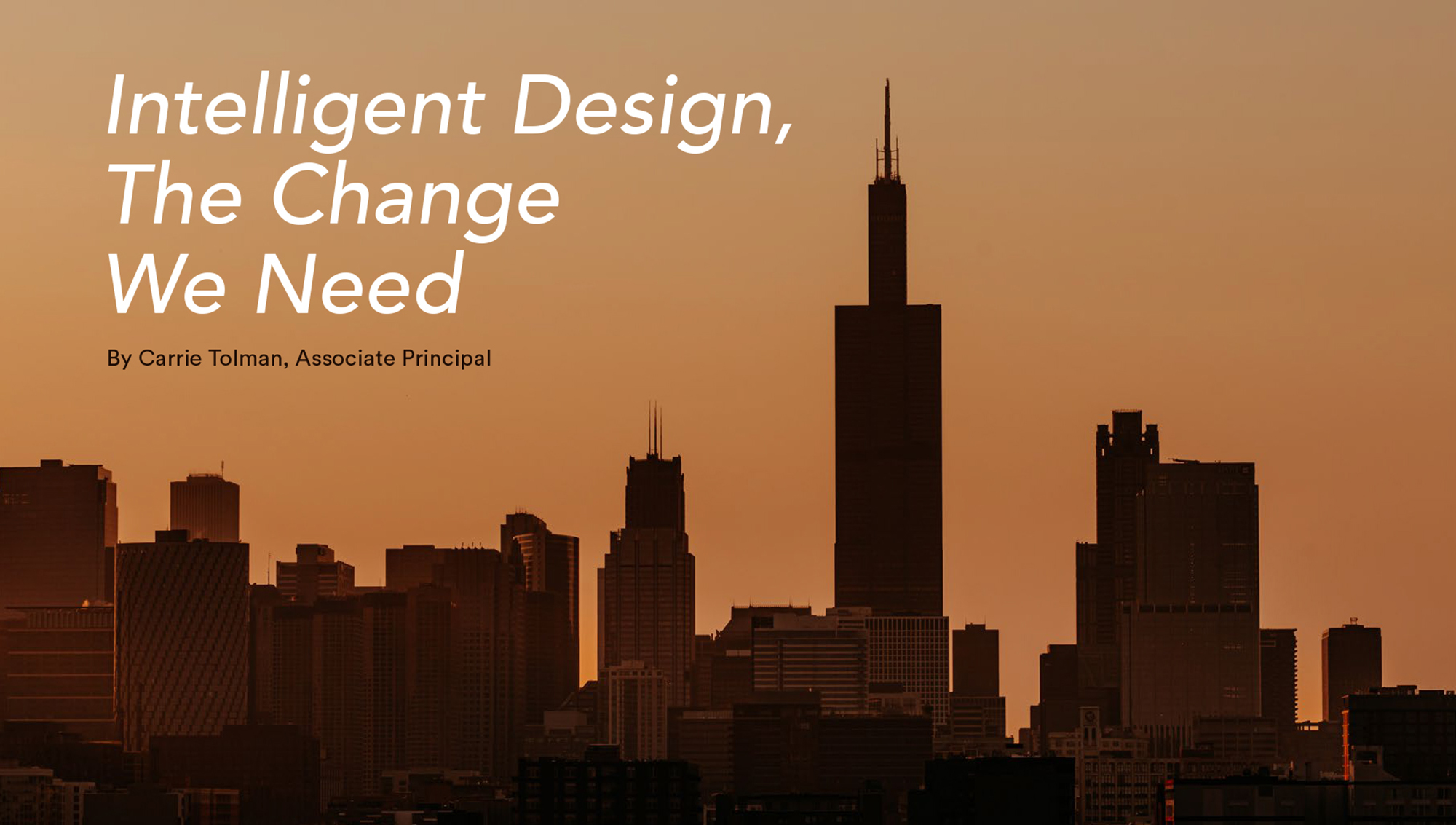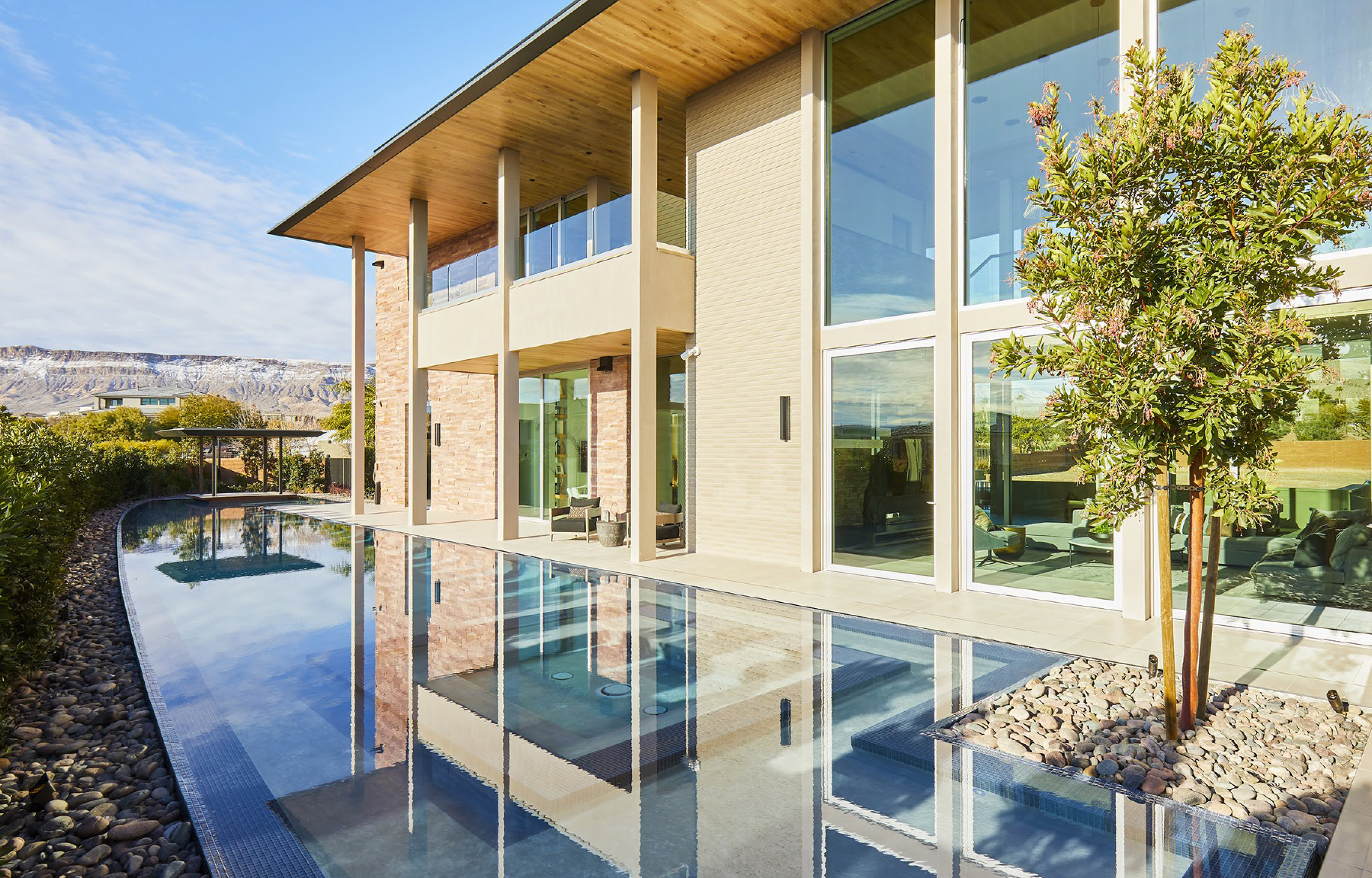
The Chicago skyline, clouded by smoke and ash, turns from rich blues to an ominous red. Photo Credit: Getty Images
Economic, societal and environmental factors are transforming how we interact with the built environment and how it affects us. In this ever-changing world, creative thinking and the ability to adapt have never been more relevant. As architects and designers we are driven to be more agile with our design choices due to rapid advances in not only the materials and construction methods we can select but also the tools with which we design. In response to changing environmental, technological and economic factors, the design process has taken on new facets and perspectives. In this time of rapid change, it can often feel like our progress gets weighed down by the constant evolution. Intelligent design, however, coupled with new technology and materials, provides the opportunity for design professionals to respond nimbly to new challenges and infuse the built environment with enduring value.
Over the last decade, the built environment has made up 40 percent of global GDP. Due to its outsized economic effect, decisions made early in the development process can have far-reaching consequences. Over the last 20 years, new governmental regulations have demanded more out of design and materials than ever before, a fact our clients have noticed in their bottom line through savings in energy operating costs. As expensive as it is to build, according to Lance Hosey of ArchDaily, the initial costs account for as little as
five to 10 percent of what an owner will pay over the lifetime of a building. The value in high-performance design has been shown to have a direct correlation between the investment in reducing a building’s ecological impact and a higher year over- year market value of the property. Much of this high-performance design is evident in the efficiencies of the mechanical systems and the materials selected. According to the World Green Building Council, the greater the commitment, the greater the return; best practices could save nearly $500 billion annually. Interestingly, intelligent sizing and shaping of the buildings contribute significantly to these gains. The earliest design decisions have the greatest impact on the eventual success of the building. Intelligent design is the key to economic efficiency and the best possible long-term capital gains.
Earlier this year, a miasma of orange and cloudy dust descended on Chicago’s skyline, prompting me to once again don a KN95 mask to walk to work. Hazardous air blew in from Canadian wildfires and turned my world into a scene from a ‘70s dystopian movie. In this time of accelerated environmental flux, necessity remains the mother of invention; green design and value don’t have to be at odds. In a recent development in East Sussex, England, addressing a housing crisis, 100 homes are being constructed with prefabricated hempcrete panels made from hemp, water and lime. These panels will sequester carbon over their lifetime, contributing to a reduction rather than an addition to the carbon crisis. Similarly, within the United States, developments in highly dense urban environments are influencing critical design decisions regarding access to light and the outdoors. Room-like balconies and green spaces within residential units, coupled with natural ventilation, enable developers to create a premium that didn’t exist before. These design choices, often resulting from green initiatives, are revolutionizing nearly every phase of conventional construction. As Mother Nature continues to shape the environments in which we design and develop residential products, we must be nimble, think differently, and innovate in our approach to focus on design aesthetics and product quality has reached an all-time high as an increasing number of developers track their investments in high design using quality products. The feedback they share indicates that developments leveraging these tactics yield better long-term financial gains. Developers are discovering that properties where they initially invested in high design and quality materials receive a more favorable response from buyers who have the capital to make purchases in a tight market versus properties in their portfolio with less investment. For the properties they continue to hold, developers notice that the initial investment in quality, not necessarily expensive products, results in developments that withstand the tests of time and the environment. An investment in durability is increasing the value of their holdings year after year, deferring the need for renovation and thus lowering lifetime expenditure. While this concept is not revolutionary, when coupled with green initiatives spreading across the country and the lack of liquidity for development, clients are reconsidering what makes sense in this market.
These advancements in design, whether prompted by green initiatives due to rapid environmental change, economic instabilities, or emerging technologies, present a unique opportunity. We now possess the tools, from branding to interior design, to craft curated and deeply thoughtful design solutions. By leveraging these advances, we can not only help our clients achieve long-term financial goals but also make a significant difference in the communities we are tasked with designing. We stand on the cusp of monumental changes in our industry, poised to create solutions that positively impact the world and guide the change already occurring. As design professionals, we have always been in the business of setting the stage for humanity to live well but will we take up the call to help them thrive?

